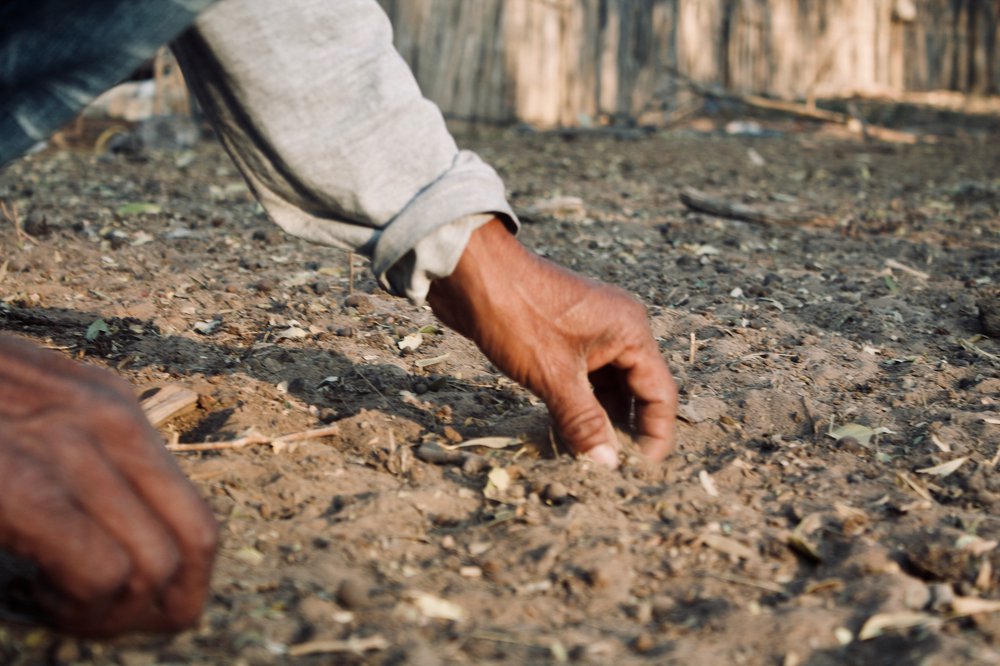What do land, forest and water mean? If you don't have the land you are nothing, the forest is our lung. And water...it is life. You, me, our children, our grandchildren - if we don't have water, how can we live?"

The Chaco Salteño, Argentina
The Chaco Salteño is one of the most arid areas of Argentina. In fact, it’s very hard to imagine that anyone lives here, that anyone COULD live here. And yet, the region is surprisingly rich in biodiversity and culture and many call this arid Chaco their home.
Nestor Monte is one of them.
Nestor and the Wichi indigenous community have been in this area for over ten years, after a difficult titling process that was completed in 1997. His parents and grandparents dreamt of moving to a place where their community could thrive. Since settling here, Nestor has been trying to live up to that dream, for himself and his community, despite the unwelcoming natural conditions of this territory.

The Wichi community has been living in Lote 8 for about 10 years

Wichi textiles
The Wichi (originally hunter-gatherers) own small animals - goats, chickens and pigs - and a few hectares of land to farm. But lack of water is a real problem, threatening the community and their livelihood. It’s also the reason why this area is one of the poorest in Argentina. The effects of climate change and the degradation of natural resources have exacerbated the situation, further marginalizing the indigenous communities who live here, like the Wichi.
“There is no water enough to be able to say: we have water. Today we are waiting for the rains.”
A few miles away, Lucía and her daughter Ivana are sharing similar thoughts. Lucia and Ivana are campesinas, their land has been in the family for generations. Their life depends on it, on what they grow, and on their livestock.
But without water, nothing grows and nothing survives.

Lucia looks after her land and livestock
“It is very difficult to grow crops or vegetables here, because the underground water has saltpeter in it. Plants die if you water them. It is useless for us to have water for consumption if we do not have water for production - it’s our life, it’s our source of work.”
Things have started to look up, however, over the past few years.
In 2013, ILC and other organisations developed the Semiarid Platform Latin America, a joint effort to improve the conditions of indigenous, peasant and Afro-descendant communities in ten countries across the region.


Ivana works for a local organization helping peasant communities to secure their land rights.
In Argentina, the Platform was crucial for designing the Law on Water Access and Management, which was presented to the Salta Government in November 2019, and adopted a month later.
The law is expected to guarantee greater access to water to almost 8,000 peasant and indigenous families in the Chaco province.

Nestor with one of his goats

Lucia, as she performs daily tasks around her land
“Access to water is a fundamental right and a fundamental objective for us to achieve. There is nothing more important than life itself. And water is life. That 's why these initiatives have so much strength.”
A Mesa de Agua (Water Roundtable) was also set up to facilitate the dialogue between the stakeholders involved - civil society, indigenous and peasant organisations, the local government, and international actors.
Since the Mesa de Agua was created, over 2,000 cisterns have been green-lit to allow both rural communities and indigenous peoples in the Argentinian Chaco to access clear, running water for themselves and their livestock.

Water from one of the cisterns that Lucia and Ivana have access to

Wichi children
"The Mesa de Agua works at the community level so that the rural population that is dispersed in the province has access to this resource, which is so important for the lives of many families and for agricultural production"
The communities play an active role in the process.
Nestor has been involved in identifying and mapping the areas most severely affected by lack of water to ensure that the cisterns are built where they are really needed.
Lucia, Ivana and their community go through a similar process.

“The families that have a greater need - although everyone is in need of water - but those with children, elderlies or simply larger families, are prioritised to receive a cistern or other water infrastructures.”

For Lucia and Ivana, water is not only necessary for consumption for also for production
The cisterns have been life changing for the communities of the Chaco. Their development, however, depends on whether or not people have tenure rights over their land. Without a land title, most people are still left behind.
“Land ownership allows people to apply for projects or programs that require a land title. Water infrastructures cannot be built on private land and the province asks for a land title to grant access to the cisterns.” - explains Ivana.
Their claim for water continues.
But in the meantime, the Mesa de Agua model has been replicated in Bolivia, Venezuela and Paraguay where similar semiarid regions are also affected by lack of water.

One of the water cisterns on Wichi's land

It’s hard to imagine a life without water, a life where water is not a fundamental right, but something to be achieved. Nestor’s ancestors dreamt of finding a place for their community to thrive. Today, Nestor, Lucia and Ivana are standing up for that dream.
“Why can’t a person have a decent life, have a home, have enough water, everything? It’s the dream that every person has.”
Learn more about how ILC is improving access to water and people-centred land governance in the Semiarid regions of Latin America in a summary of our contributions
DOWNLOAD HERE.
©ILC/CANOA/Nicolás F. Avellaneda







